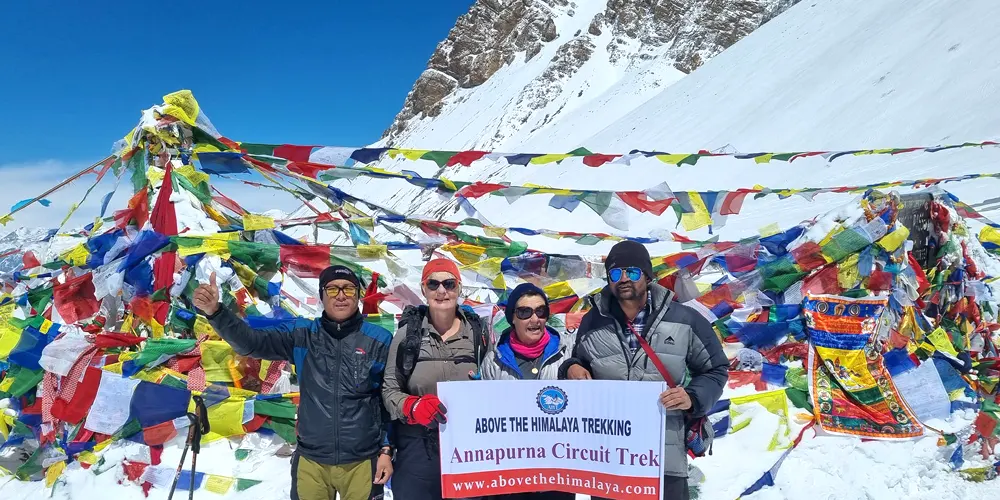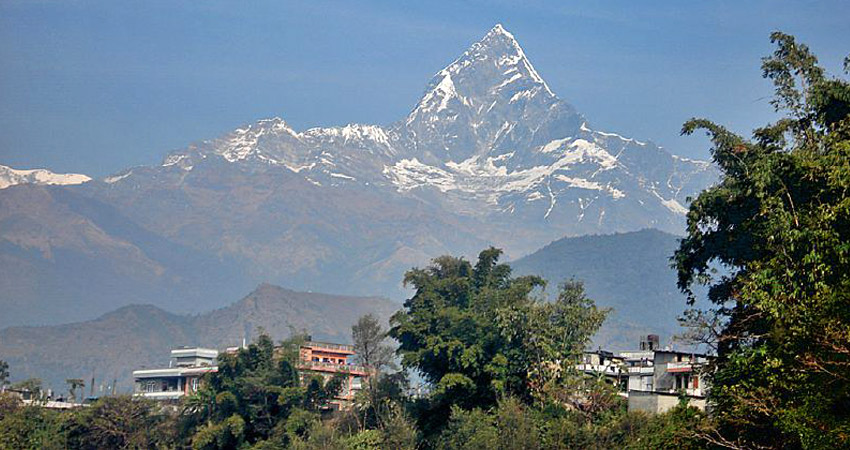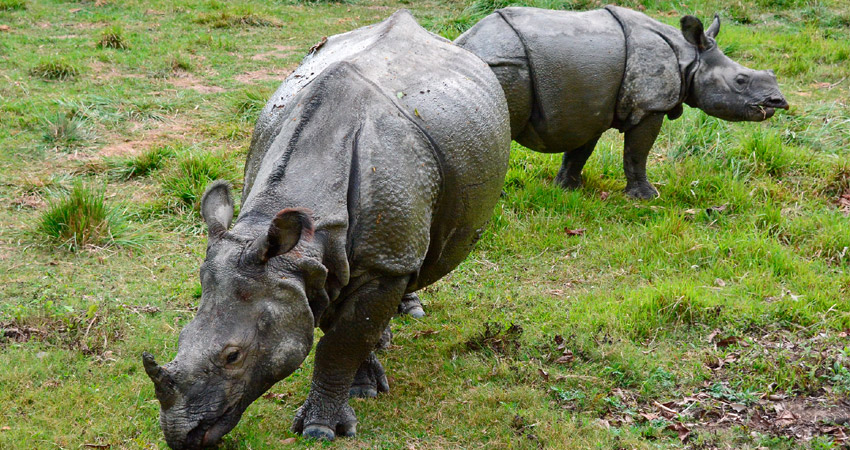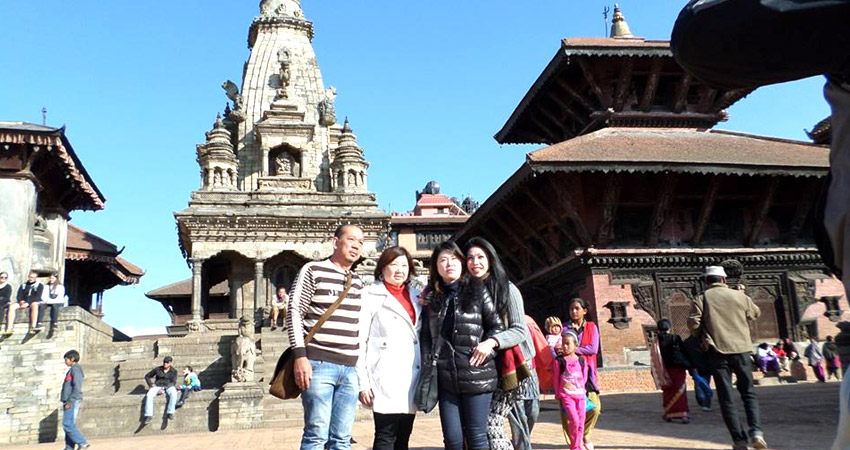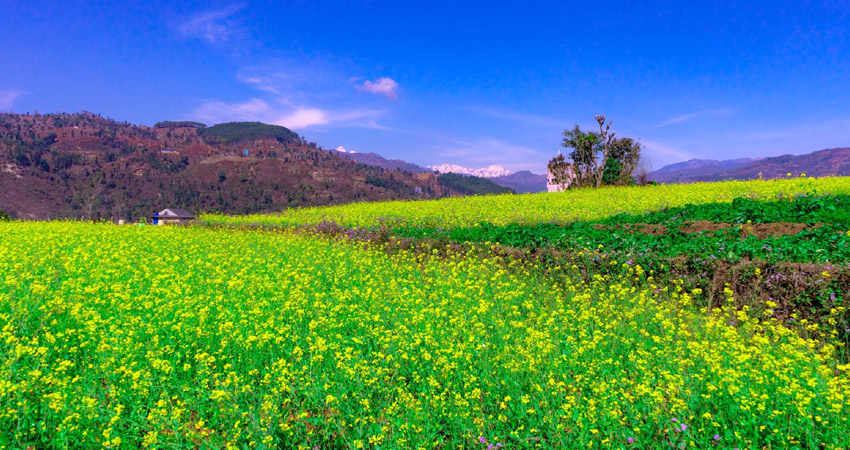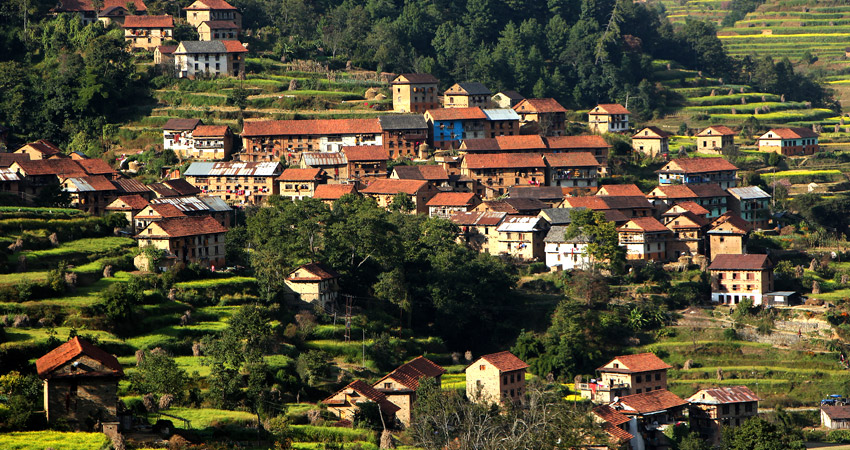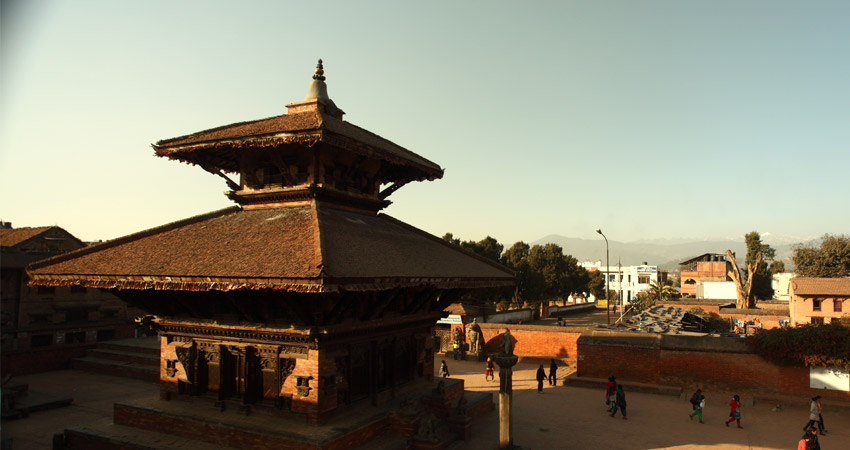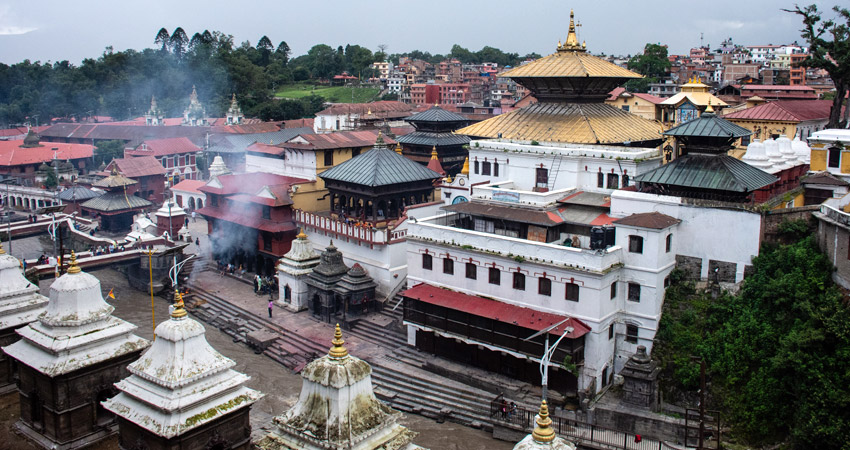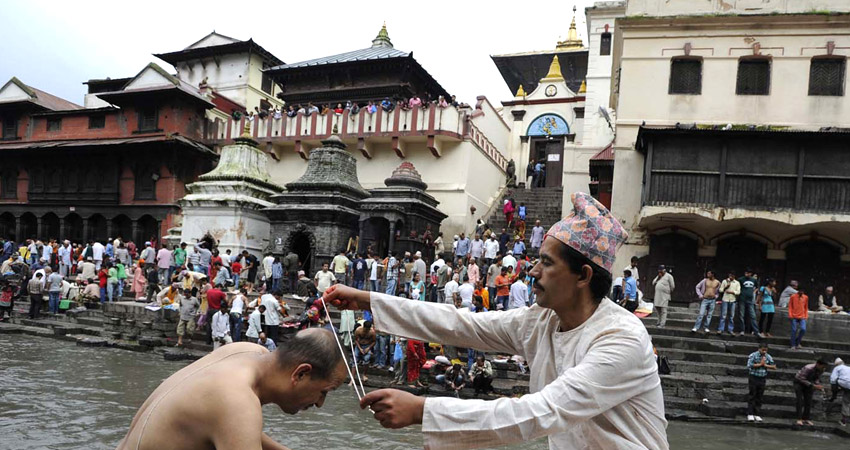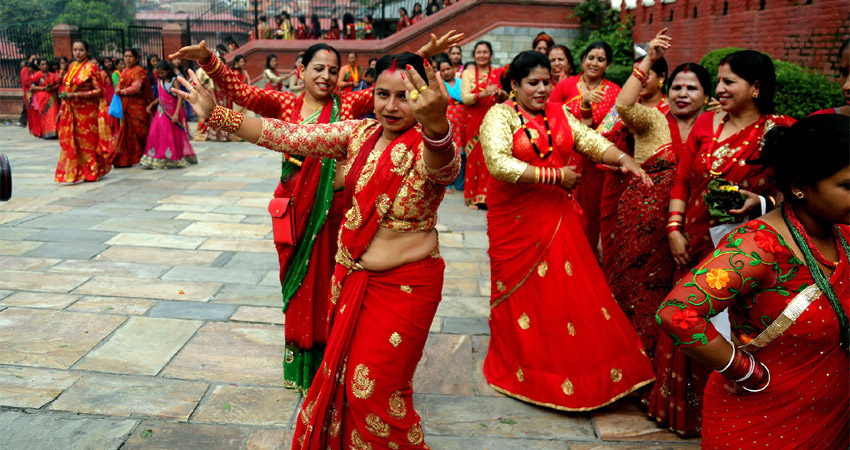Nepal is truly a natural blessing to this world. Annapurna area, among all the other beautiful regions in Nepal, is the most sought-after and terrific place you can go to for an adventurous time and some getaway time from your busy schedule. Besides catering to Nepalese travel enthusiasts, the Annapurna round trek has also been a favorite for foreign trekkers and travelers.
Annapurna round trek is meant for almost every other traveler if they keep a few essential aspects of the trek in mind. While it is the most astounding trekking spot, it can be just as challenging for many to take a round of the region. However, this does not necessarily mean completing the trek is impossible.
Some of the most important things to know about the Annapurna round trek are listed in this article. Read until the end of this article to learn more about the Annapurna circuit trek!
What is Annapurna?
While those actively trekking around the world know or have heard about Mount Annapurna and the Annapurna region, many don’t know about the splendid trekking spot in Nepal. Annapurna is a mountain chain that includes some of the tallest peaks in the world. The tallest, Mount Annapurna, or the central mountain, is over 8000 m tall and stands at a glorious height of 8091 m above sea level. Likewise, the other mountains are also quite tall and are all taller than the height of 6000 m, if not as tall as the central mountain.
The Annapurna circuit trek offers a slice of heaven. The mountain’s name comes from the Hindu goddess of abundance and nourishment, Goddess Annapurna. The goddess is believed to have been the daughter of the King of the mountains, Himavat. The name of the hill perfectly fits its origin.
There are at least 13 mountains about the height of 7000m and more than 16 above the height of 6000m in the Annapurna mountain chain. The mountain chain of Annapurna is 55 km long and meets Kali Gandaki Gorge. This gorge is also the deepest not only in Nepal but also in the world. The Pokhara Valley, a famous tourist destination in Nepal, falls around the corner of the Annapurna region. This is also why many travelers, including Nepalese and tourists, go on the Annapurna round trek whenever they visit Pokhara and vice versa. Moreover, the Marshyangdi River also meets the Annapurna Massif.
Is Annapurna dangerous?
Yes, Annapurna is quite possibly one of the most dangerous mountains in the world. There have been many who have gone to the mountain and never been found. Deaths in Annapurna are widespread, and not everyone is shaped to be a part of the Annapurna mountaineering journey.
However, this does not stop anyone from exploring the lower regions of the mountain with much guidance and precautions. Annapurna is also the tenth-highest mountain in the world, which proves why it is deemed one of the most dangerous. The hill remained unclimbed until 1950 when mountaineer Maurice Herzog conquered the peak. The mountain has been open to trekkers for mountaineering journeys and trekking.
It would be an understatement to say that Annapurna Peak is lethal. It is only wise for trekkers with less knowledge and expertise in trekking to roam around the mountain than go to the top. Despite the difficulties that may come your way during the Annapurna trek, there has been increased awareness about the dangers and the importance of safety and precautions when going up to the mountain. This has resulted in the growth of trekkers worldwide in the Annapurna region, and the number of trekkers has increased every passing year.
What is the best time of the year to go to the Annapurna round trek?
Mountains do not favor anyone. If you are a traveler by heart, then it is up to you to decide the best time of the year to visit the mountain. A tremendous religious sentiment is associated with the hill, which might also be why many travelers are restricted from going to the mountain at any time and season. This does not, however, apply to every other trekker or traveler. Considering the season and weather conditions in the mountains, the best time of the year is spring or fall.
Spring sees fresh bloom and delight in the sky and the air. This makes everyone fall in love with the mountain’s beauty. One of the main reasons why spring is preferable is that the weather is not as cold, cloudy, or rainy during this time of the year. Similarly, since summer is only closing in, it is not too hot either. The sky is usually straightforward, and the view of the mountains and the environment around the mountains are as solid as ever.
As for fall, tourists tend to prefer trekking around the Annapurna region during this season because of the kinder warmth in the air. Unlike a hot summer and unbearably chilly winter, fall can help any trekker feel comfortable in the mountains. Since the sky is clear and the weather is quite warm, you will also feel a sense of convenience while you trek even to the most challenging trails. Finding the right clothes to wear during spring and fall is not tricky. You can wear light clothes and won’t have too much to carry. This means hiring fewer porters, especially if traveling in a group.
Winter and summer treks are less common. Many adrenaline junkies tend to prefer winter for their winter expeditions to both the mountain and the mountain region. But, it is not suggested that trekkers choose this season out of every other season as the weather is cold, and there is a bigger chance of meeting with an accident during your time in the Annapurna region. Winter expeditions and treks also make it possible for trekkers to become victims of avalanches, the most common during winter.
In summer and monsoon, heavy rainfall and excessive heat in the air have become a problem for trekkers. Choosing the right clothes to wear during round treks is almost impossible. Additionally, the trails are muddy, adding to the already challenging nature of the pathway.
What is the back draw of traveling in the peak seasons?
While safety comes first, and there is almost no back draw to the peak seasons, one must know that at least one or two cons follow regardless. One of the major cons for many travelers looking to cut down their budget during travel is that the cost of airfares, specific tickets, and accommodation costs are higher during the peak seasons. If you choose to travel during seasons that are not as famous for treks, then you are likely to complete the Annapurna round trek at a lower cost, but there are many associated risks.
Moreover, the crowd during peak seasons may make it impossible for some trekkers, especially beginners, to find it easy to trek through the busy trails. Trekking is always more challenging when there are many people and more accessible when there are fewer. These backdraws of even the most peak seasons have been the reason why many trekkers have stopped or are seeking financial aid to make expeditions. However, proper planning and execution can always come to the rescue of any and every trekker.
What makes the Annapurna Sanctuary route different from the Annapurna round trek?
Travelers often confuse the Annapurna Sanctuary route with the Annapurna round trek. Though similar, these treks are different and have many varying factors. The Annapurna base camp trek and the Annapurna circuit trek are more popular than the Annapurna Sanctuary route, but this does not necessarily make the latter less preferable.
The main difference between the two treks is the route. Those looking for a more adventurous journey with a chance to explore the maximum features of the mountain can opt for the Annapurna circuit trek. In contrast, others can go for the Annapurna sanctuary route. One of the main reasons many choose the latter despite the longer route is that, when you’re in Annapurna, you want to explore as much as possible, as it is almost always a one-time thing in most travelers’ lifetimes.
While taking a circular route through the Annapurna trek, you will go through the oval glacial pathway when you’re in the Annapurna sanctuary trek. You will be coming through a massive Taal or a lake while going through the Annapurna round trek route. The scenery of the region is mindblowing. As for the Annapurna sanctuary trek, as the name mentions, you will be trekking through the sanctuary area and taking rounds of the beautiful glacial basin.
The Annapurna Sanctuary trek takes only 13 days, while the Annapurna round trek takes at least 16 days. You must walk 4-8 hours daily to complete the latter trek, while the former trek does not necessitate walking as long as 8 hours daily. Your daily trek can be cut off at a maximum of 6 hours.
Why is the Annapurna round trek going to be unique for trekkers?
Annapurna round trek is memorable for trekkers due to many reasons. Some of the primary reasons as to why you should choose to go on this trek are:
Sense of achievement
Trekkers will feel a sense of achievement when they go on the Annapurna round trek or the Annapurna circuit trek, which is known as one of the most challenging trekking destinations in the world. You won’t have to suffer even a bit, given that you are adequately trained for what’s on your way and take all the necessary precautions wisely. The end of your trek will make you feel like you’re on top of the world, which you almost will be.
Testing your limits
Annapurna Round Trek truly tests the limits of the people. Starting the trek is very often tough. You have to keep yourself dedicated at all times. There is a more significant likelihood that some may even regret beginning the journey in the first place, as it is not the most straightforward journey you’ll be taking. But, for those who want to know how far they can go and how fine of a trekker and an adventurer they are, there is no better trekking choice than this one.
Natural beauty exploration
Visitors get to explore nature’s beauty when they are on the Annapurna round trek. This trek is all about going out and about in nature while leaving behind hustling and bustling urban settlements. You will be able to discover how excellent the environment in the mountains is when you are here. Further, visitors will also get to explore deserted mountainous trails against some of the most red and thick rhododendron trees.
The glacial walls you see as you ascend the Annapurna round trek will make you feel like you’re in a surreal land. Overall, exploring nature never becomes as unique as it does when you’re in the Annapurna region.
Intimate interaction with the local way of life
Local people have a particular way of life, which cannot be seen well in an overly modernized area, even Nepal. The city area does not reflect the authenticity of traditions and older ways of living. Since the villages and most settlements in the Annapurna region’s lower and upper areas have not yet seen immense modernity, as have many other parts of Nepal, traditions and an ancient way of life still bind people.
The simplicity in the people’s lives in the Annapurna region will make you feel like you’ve become intimate with a somewhat forgotten way of life.
Nepalese culture interaction
There are different elements of Nepalese culture. During your Annapurna round trek, you’ll learn how people in the busiest cities and the quietest and most isolated parts of Nepal live. Different places have different cultures, followed by other groups of people from various backgrounds.
Discovering cultural differences on this trip will blow your mind as to how different people can be in the same country. As you start your journey from either Kathmandu or Pokhara, you will learn about the castes and traditions of people living in the hills. On your Annapurna round trek, you will discover how people living in the mountains can be and how different other castes besides Sherpa people exist in the region.
Religious journey
People in the Annapurna region are very keen on their religion. Other than that, you can come through people who are very religious and fond of worshiping their gods and goddesses as soon as you start your journey. From Kathmandu to Annapurna, you will find a rich Hindu and Buddhist culture that the people follow with great relishment. The religious journey will prove to be worth your time, and you won’t even have to make as much effort to know the different religions followed by the people as the followers, who often show their devotional acts occasionally.
Brief trip to Pokhara
Pokhara is one of the most popular tourist destinations in Nepal. Annapurna region is the closest to Pokhara. Therefore, you can view Mount Annapurna from Pokhara. From touring in a hired vehicle to simply cherishing the naturally beautiful locations in and around Pokhara, it will be possible to spare some time from your Annapurna round trek. You can talk with your agency and guides to either lengthen your trip or allow you to cover as many aspects of this part of Nepal as you can.
Brief trip to Kathmandu Valley
While Pokhara is close to the Annapurna region, you can also take a brief trip to Kathmandu Valley. It is likely for your trek to start and end in Kathmandu Valley. You won’t be spending your time in a single hotel room when you’re in the capital city. Hence, leaving your hotel means getting the best of both worlds on a single trekking trip. One cannot find trekking spots or as many adventurous destinations in Kathmandu Valley. However, a factor about the valley must be explored is its loudness and busy streets.
Kathmandu is rich in ancient art and architecture and is home to unique delicacies. You would regret missing a day tour around Kathmandu. There are plenty of places to visit, including marketplaces, temples, monasteries, museums, souvenir shops, eateries, etc.
How long should you walk during the Annapurna round trek?
Annapurna circuit trek makes trekkers go circular anticlockwise in the Annapurna region. The beauty of the location is preserved in the most intricate possible way since trekkers don’t have to repeat the exact area twice. You will see a different view in every other step you take during the trek. The trekking journey starts from Besishahar once you’re in the region. And you will be heading toward Pokhara by the end of your Annapurna round trek. It is making a round of the Annapurna region from one end to the other.
To cross the Thorong La Pass, a dangerous aspect of the trek, you must go slow as you exceed a certain altitude. The higher you go, the harder it will be for you to breathe without an issue. Therefore, going slow will ensure that your body is settling to the changing altitude and thickness in the air. Doing this may lengthen your trek by a few days, but you will be safe throughout.
While the traditional Annapurna round trek takes 19 days, trekkers don’t need to bind themselves to this particular time frame. The time taken for this journey can vary from one person to another. While one takes longer to acclimate, rest, and get energy for the next day, others may take less time. Either way, what is the most convenient for someone should be the measure of how long the trek should stretch.
Itinerary of Annapurna round trek
The Annapurna round trek takes around or more than 19 days to complete. To stay safe, you can stretch the trekking days instead of trying to shorten the length of the trekking days. The following is the itinerary of the Annapurna round trek:
● Drive from Kathmandu to Besisahar.
● Trek from Besisahar to Bulbule.
● Trek from Bulbule to Jagat.
● Trek from Jagat to Dharapani.
● Trek from Dharapani to Chame.
● Trek from Chame to Pisang.
● Trek from Pisang to Manang.
● Acclimatisation and short exploration at Manang.
● Trek from Manang to Yak Kharka.
● Trek from Yak Kharka to Thorung Phedi Base Camp.
● Trek from Thorong Phedi Base Camp to Muktinath via Thorong-la Pass (5416m).
● Trek from Muktinath to Kagbeni.
● Trek from Kagbeni to Marpha.
● Trek from Marpha to Larjung.
● Trek from Larjung to Ghasa.
● Trek from Ghasa to Tatopani.
● Trek from Tatopani to Ghorepani.
● Trek from Ghorepani to Tikhedhunga.
● Trek from Tikhedhunga to Nayapul and drive back to Pokhara
How difficult can the Annapurna round trek be considered?
The Annapurna round trek is not the most leisurely trek to complete. It has been considered more challenging than the Annapurna Sanctuary and Annapurna Base Camp treks for several reasons. The trail to the Annapurna round trek is also longer than the other treks. While the stereotypes for the Annapurna round trek remain the same in the minds of those who have not even started their journey, the difficulty of the trek can heavily depend on the physical fitness and mental soundness of a trekker.
Any trekker who has not trained his body and mind for a trek like this can suffer more than a trekker who has trained himself properly. Though not preferred by many trekkers and travelers going to the Annapurna region, you also get the option to travel by jeep or a vehicle when you’re on the Annapurna round trek. The vehicle ride will likely be far from the trekking trail. While you can fully enjoy the scenery of the mountainous region in Nepal, there is no avoiding the dirt roads.
One of the cons of trekking through the Annapurna region’s trekking trails through the Annapurna round trek route is that you cannot prevent the dirt roads. You have to walk through the streets to reach your destination finally. However, traveling in a jeep makes it possible for trekkers to cover a great distance on the dirt road without getting their shoes dirty in less time.
If you want to go to the highest and most difficult points of the Annapurna round trek, you can expect just as many challenges on the way. The best way to tackle the difficulties that come your way during the Annapurna round trek is to rest adequately during your journey. Resting and keeping your mind and body relaxed means you are not in a rush and enjoying your trek to the fullest. Mental and physical burdens can often lead to more problems than otherwise. It is up to the trekker to keep himself in a proper mental state while accomplishing one of the biggest goals in his life.
Strength training and physical exercises are another great way to train your body.
Your body will stress less in extreme conditions when habituated to going through the most challenging roads before the trip. And, taking a porter and a guide with you is the ultimate way to get the heaviest of your loads and mental confusion out of your mind.
Trekkers stress less when they get a chance to freely explore the mountains without having to carry a load of heaviness with them. Trekking to the Annapurna round region is complex, and being stingy towards your trekking porter might mean inviting way too many problems for yourself than necessary. Also, a trustworthy guide will keep trekkers sane and assured about the destinations, difficulty, ease, and deformity of the ending journeys during the Annapurna round trek.
The temperature during the Annapurna round trek will be much colder than you might be experiencing in the hilly region of Nepal. The fall in temperature gets more common as you move higher toward the destination. The Annapurna round trek usually has a temperature of 5 -10 degrees Celcius during the peak seasons (fall and spring).
However, the temperature is likely to fall lower during the winter months. The most you’ll have to undergo is a minus temperature, which can cause human body parts to freeze and drop due to frostbite. To avoid any mishaps due to the temperature of the Annapurna region, you must always keep warm and stay as cautious as possible.
Avoiding dusty roads during the Annapurna round trek
During the initial times, as the trekking journeys to the Annapurna region had started, there were fewer roads. The area was almost natural and did not influence Tony’s modern road facilities. What ought to be a road to development became a drawback for trekkers and travelers, and in general, the entire tourism community in Nepal, because there were eventually only a few trails without roads in the region through which the trekkers could trek without an issue.
Avoiding dusty roads in the Annapurna round trek, the New Annapurna Trekking Trail (NATT) system and the Annapurna Conservation Area Project (ACAP) have come up with a way to avoid as many roads as possible to ensure that the trekkers get the total experience of trekking in one of the most sought regions of Nepal. Dusty roads have increased due to travelers coming in their motors and road vehicles. In the past, there weren’t as many who would even come to the area by car, but unfortunately, times have also changed the nature of the trekking region.
The motives to conserve the Annapurna region while keeping it from losing its essence have led newer trekkers to find pathways with the fewest roads. You are likely to see a path led by the Poland flag. Trekkers who follow this particular trail will avoid roads, dust, and unnecessarily nature-disturbing aspects in the Annapurna round trek.
What should you take to your Annapurna round trek?
Annapurna round trek is not for beginners. Even if you are a beginner, you must have excellent physical fitness and strength to carry the entire trek. Going through an extreme temperature and making it out comfortably requires a lot of equipment. Trekkers can easily find the necessary equipment, gear, and materials for their trek in their home country (If they are foreigners), Kathmandu, and Pokhara. Trekkers always find trekking equipment in Kathmandu cheaper. Additionally, you can always hire trekking equipment instead of buying them directly.
Some of the things that you should take to your Annapurna round trek are as follows:
Spacious bag
Trekkers must carry a spacious bag to fit all the equipment and gear they may need during their trekking journey. The Annapurna round trek does not last less than 19 days. Therefore, you can only think of everything that you, even as an individual, will need throughout time. While all the other equipment and gear come to mind later, you must ensure that your bag is durable and easy to carry to take it to extreme weather and challenging conditions.
Water bottle and purifying tablet
Another essential item you must always take on the Annapurna round trek is a solid water bottle and purifying tablet. A water bottle must carry at least 2 liters of water. Finding pure drinking water on the Annapurna round trek is not always possible, so you need a tablet to ensure the water is always clean. Staying hydrated throughout your journey will keep you healthy and active.
Dehydration in trekkers is one of the primary reasons why many tend to fall sick in between treks and suffer heavily. You can get water from almost anywhere, including teahouses and some natural streams on the way, and drop a purifying tablet now and then to ensure you’re drinking clean water.
Lightweight, warm clothes
Lightweight and warm clothes don’t always seem to fit together often. But, as a trekker, you must ensure that your clothes are lightweight and warm. Since the mountains are icy regardless of the season compared to every other part of the country, it becomes crucial to carry clothes that provide as much heat as possible while remaining lightweight on your body. Wearing heavy clothes may make it difficult for trekkers to complete their journeys as it weighs them down throughout the trek.
Downjackets, inners with fleece, seamless linen clothes, etc., can be the best examples of lightweight clothes that also keep you warm. Also, you have to wear socks that are designed for trekking. Random socks might also make you the victim of your circumstances often during your trekking journey.
Comfortable trekking shoes
Wearing comfortable trekking shoes is how you complete a trekking journey without difficulty. Trekking shoes are designed for trekkers and mountaineers. You can hire or buy these shoes at almost any other trekking and sports store in Kathmandu. Breaking your boots before you wear them on your trip is just as crucial.
Breaking trekking shoes makes it possible for your shoes to breathe during the trekking trip. Congested feet can make it impossible for trekkers to keep walking on their journey, but this is not the case when the shoes are broken down and have a loose fit.
Undergarments
Many trekkers underestimate the need for a comfortable and breathable undergarment pair. You need to wear light cotton fabrics as much as possible. Getting infected in intimate areas due to uncomfortable and tight undergarments can be a dreadful experience for any trekker.
Though it may not seem like the most crucial aspect of your trek, convenience always comes to those who keep every detail of their trek and body in mind. Wearing uncomfortable and inappropriate undergarments to your trek means that your body will likely collide roughly with the fabrics, which may cause difficulty moving to your destination.
Hygiene and sanitary products
One of the significant pieces of equipment you must carry with you is a bag full of hygiene and sanitary products (for women). Carrying such products keeps you assured of how you will be during your trek. Leaving out any such essential products at home means that you might suffer a good deal when you’re on a trek that does not have as many shops for hygiene products. When you have stuff as a backup during your journey, you tend to have it easy throughout your trek.
Knickknacks
A set of knickknacks must be carried to be used as elements for passing the time during the trek. These things will work to keep a trekker occupied when he is not trekking. Some of such stuff includes notebooks, cameras, books, and sketchbooks. These things may not seem as handy, but only a trekker who has been on a trek for more than two weeks knows the importance of carrying small things that will keep one occupied during complex trekking journeys.
Trekking gears for Annapurna Round Trek
Trekking gears vary from one another. Carrying ropes, helmets, sunhats, gloves, headlamps, etc., makes a trekker fully equipped. You never know when you’re going to need this stuff. Therefore, gears are essential in working as safety kits for trekkers. Along with this equipment, one must always carry sun lotions, moisturizers, sandals, light short clothes, lip balm, and a first aid kit with lots of medications and safety components in their bag before proceeding to a rather tough trip ahead.
Conclusion
The Annapurna round trek is very common among trekkers. Many have spent years exploring different regions and routes of the Annapurna region. But the Annapurna round trek or the Annapurna circuit trek stands out from every other trek.
This trek will make you feel at home if you take all the precautions seriously and keep moving forward while following the region’s rules. As per the suggestions in this article, keeping oneself comfortable will also greatly help trekkers. Overall, this trek is the best for finding your luck as a trekker and making as many memories as possible.

